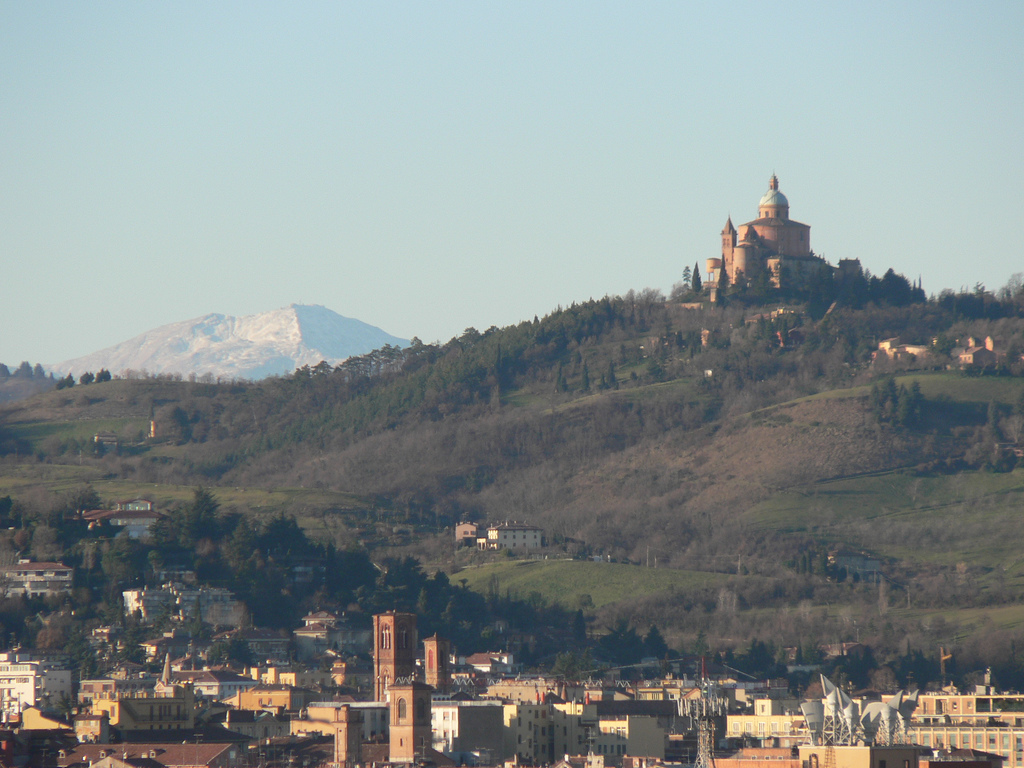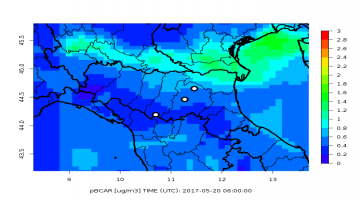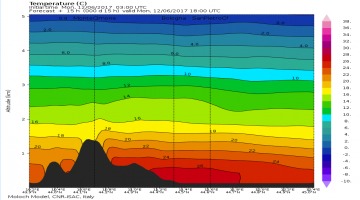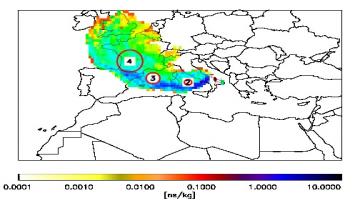Introduction and motivation
Atmospheric observations and model simulations of aerosol physical and optical properties as well as radiative properties under high and complex absorption regimes are extremely challenging. The availability of measurements with well assessed and improved accuracy is also fundamental for model constraint and assessment. It is important to test and validate both ground-based and satellite measurement techniques as well as model simulations in “real” atmospheric conditions. This is particularly urgent for “hot-spot” regions, both in Europe and elsewhere in the world (Atmospheric Brown Clouds), where anthropogenic emissions and natural contributions strongly influence the absorbing aerosol components. To this end, the North-Italy Po river basin represents a unique opportunity within the European continent to test advanced and innovative techniques developed within ACTRIS, since this area represents a major crossroads for different types of aerosol, which often have a multi-layer structure in the lower troposphere.
During ACTRIS, advanced research stations were strengthened in the Po Valley, including three supersites, with elevation spanning from sea level up to the free troposphere: Bologna CNR-ARPAE Supersite (54 m, active from 2010), S. Pietro Capofiume CNR-ARPAE Supersite (11 m, active from 2001), and Mt. Cimone GAW Global Station (2165 m asl, active from 1996) with locations able to integrate, in a vertical and spatially coherent framework, continuous observations of in-situ and remote sensing observations of aerosol and trace gases.
During summer 2017 the ACTRIS project supports an international effort in the Po valley to investigate aerosol optical properties with up-to-date techniques. The experiment will focus mainly on observation and prediction of aerosol light absorption and the quantification of black carbon. Black carbon is the best available indicator for the description of air quality and its impact on human health. Thus its accurate quantification is mandatory to develop effective air quality measures. At the same time black carbon and light absorbing aerosol are short-lived climate forcers, and they can contribute to aerosol light absorption, and thus atmospheric warming, with a significant effect at local and regional scale. Climate mitigation strategies, especially at urban scale, will benefit from a better understanding of aerosol light absorption and its link with aerosol composition/sources.
Objectives
The main objective is to assess the accuracy of aerosol absorption and black carbon measurements (in-situ, remote sensing ground-based and satellite) and model simulations under high and complex (i.e. multi-layer) conditions related to anthropogenic and natural emissions.
In particular, a specific goal of the campaign is a comprehensive closure between absorption coefficient and BC concentration and an assessment of the factors affecting the ability of BC to absorb solar radiation, i.e. its Mass Absorbption Cross section or MAC.
The properties of BC and light absorbing organic aerosol (brown carbon) will be investigated on-line and off-line through different and complementary techniques, whose comparison will give to the scientific community further insights into the advantages and limitation of the different approaches.
In addition the link between light absorbing aerosol, i.e. black carbon and brown carbon, and aerosol chemical composition will be investigated through on-line high resolution analysis of aerosol chemical components at multiple sites, using High Resolution Aerosol Mass Spectrometers (HR-TOF-AMS) and Aerosol Chemical Speciation Monitors (ACSM).
The transport of air masses from outside the Po valley basin, together with the ageing of air pollution masses inside the basin, will be investigating through the coupling of observational and modeling tools, over the regional scale.

Method and experimental set-up
The Monte Cimone Observatory with Po Valley facilities provides a unique opportunity to obtain direct information and observations on the vertical gradient of absorbing aerosol over a 2 km-tick tropospheric layer, often affected by large amount of seasonally variable anthropogenic and natural emissions. This will allow to assess the accuracy of different measurement techniques for absorption coefficient determination.
Moreover, numerical models will help in obtaining/reproducing accurate information about the core topic of the aerosol absorption under challenging environmental conditions.
Mt. Cimone CNR Observatory, already active within EUSAAR and later within ACTRIS can provide QA/QC measurements of aerosol absorption and eqBC (time series since 2005), which are currently performed both by MAAP and Aethalometer 7w, measurements of AOD and direct solar irradiance with a PFR and aerosol profiles carried out with a Lidar (from summer 2014). Moreover, WSOC/WInsOC contributions with EC/OC and levoglucosan analyses further improve the characterization of aerosol properties.
The supersites within the Bologna urban area and at the S. Pietro Capofiume rural site offer a specific opportunity to provide information about absorbing aerosol variability and vertical profile/dynamics in the PBL, representing a reference for the vertical export of absorbing particulate matter to the free troposphere. A large instrumental set-up can offer a suite of quality-assessed physical and chemical aerosol measurements and vertical-resolved observations. Column measurement of atmospheric turbidity during daytime and nighttime (i.e. PFR, sun-photometer and lunar-photometer) will be also performed at different sites.
The field campaigns hosted in these sites allow to assess the performance of absorbing aerosol and eqBC measurement techniques in different aerosol regimes (i.e. free troposphere, heavy pollution, biomass burning, mineral dust intrusions, etc.) and layering/vertical gradients.
This activity will also contribute to the integration of the ACTRIS data-base of quality-assessed aerosol and trace gas properties. Integration of near-real time data delivery and state-of-the-art numerical models (WRF, CHIMERE), can support the development of new advanced early-warning products (e.g. export and spreading of BC and other absorption aerosol).
Finally, the integration of several measurements and modeling tools, this action would contribute to better define the sources of absorbing aerosol components in Europe, with a particular focus on the role of the Po Valley, a well-known global hot spot in the Mediterranean area.



